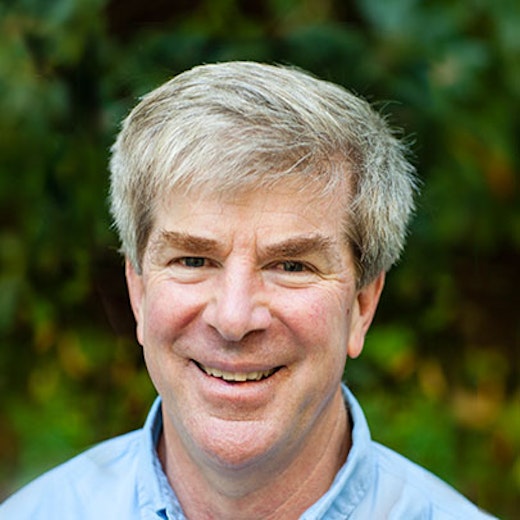Session 3: A Mentor's Perspective
by Stephanie “Ruby” Compton, GRP Mentor
Mentor group five, Hemlock Hut 2 counselor Lawton, and I all set out on an action-packed mentor hike this morning. We started the morning with rousing bus songs including The Littlest Worm, I’m a Little Teapot (We Will Rock You style), and Tarzan as we traveled along the Upper Road to our drop off point. After unloading from the bus, our group stopped at the trailhead and the veteran campers explained several of our safety guidelines and Leave No Trace outdoor ethics to the group. We vowed to respect and observe wildlife from a distance, only take seefars if we have a buddy, and to point out anything neat that we found to the entire group. 
Before traveling too far, we came across a rock covered in green and grey stuff, which most members of the group quickly identified as lichen. We discussed symbiosis and how we can remember that lichen is made of algae and fungus by this simple saying: “Ali Algae and Freddy Fungus took a lichen to each other and their relationship has been on the rocks ever since.” Some group members even tasted one type of lichen, called rock tripe, which I warned tastes about as good as you would expect something to taste if it had been growing on a rock for several years. Lawton also taught the group more vocabulary words, explaining that each species of lichen falls into one of the following three categories: crustose, foliose, and fruticose. Also, lichen can be a good indicator species of how clean the air is and Lawton confirmed that the lichen found around GRP indicates that fresh, clean mountain air is present all around us.
After filling our brains with vocabulary words, we ventured to Long Rock to explore. With a beautiful view of the valley and mountains beyond the treeline, campers were encouraged to investigate and see what they could find. Almost immediately, the group noticed a grasshopper, which one camper affectionately called a “mint chocolate chip grasshopper.” While I doubt this is the scientific name for the critter, it could not have been more accurate. The grasshopper was neon green with dark speckles all over its body. Another camper discovered that the blueberry bushes were heavy with fruit and he tasted a few (and reported they tasted much better than the rock tripe!). We gathered back together and ventured down into “The Labyrinth,” a path winding through some tall boulders and rhododendron thickets. Once we emerged unscathed from the Labyrinth, it was time for the campers to put their treasure hunting caps on and look for a geocache.
Simply put, geocaching is using military technology to find containers that are hidden in the woods. Outside of camp, containers are hidden all over the world. Coordinates are uploaded to a website and then other users can download those coordinates to their personal GPS receivers (even the GPS used in the car can work for geocaching). Geocachers then go to the location and look for the treasure which is often in a watertight container and has a log book and other trade items inside. Geocaches have also been hidden and found all over the preserve this summer and not too long before I had given the group a brief introduction to geocaching and handed them the GPS, they had their hands on the container and were passing around the log book and filling it with signatures.
We replaced the geocache to its hiding spot and returned to the trail. Further down the trail, we encountered and admired the “pointer tree” which is thought to point to a bivouac site where it is believed that people throughout history used this particular giant flat rock for shelter. We walked around the rock, crawled through the bivouac site, and smelled the minty smell of the twigs of the sweet birch tree growing above it. By now though, the group was ready to press on to the next destination: Indian Cave.
First, the entire group carefully entered the cave observing cave crickets, an old birds’ nest, and a dramatic temperature change. Campers marveled at the chimney that creates a beautiful shaft of light at various times of the day that often, with the dust particles swirling in it, looks similar to stars shooting through the night sky. Then, the group huddled in the dry room where each camper was given a Wintogreen lifesaver and instructed to look for a spark in the dark. Many of us managed to see the flash of light in our friends’ mouths that occurs when one chomps down on a Wintogreen lifesaver in the dark. Next, equipped with minty fresh breath, we explored the wet room and sang a traditional song, complete with a two part harmony, while thinking about all the people and creatures that may have taken refuge in the cave long before GRP campers began visiting it. Finally, we turned out all of our lights and sat in the stillness of the cave and experienced a quiet that is hard to find anywhere above ground.
We met up with the bus and continued with more rousing bus songs and chatting with the other group about their hike when Sandy, who was driving the bus, remarked, “Look! Everybody look!” A flash of brown skirted across the road and it suddenly clicked with everyone who was looking in that direction as the creature dashed away from the bus into the trees. “A deer! That was a fawn! We saw a deer!” After a confirmation that both campers and staff had indeed seen the deer, a celebration ensued.
Gorgeous views, hidden treasure, historic sites, and a Grand Slam animal! Who could ask for a better start to session 3?
